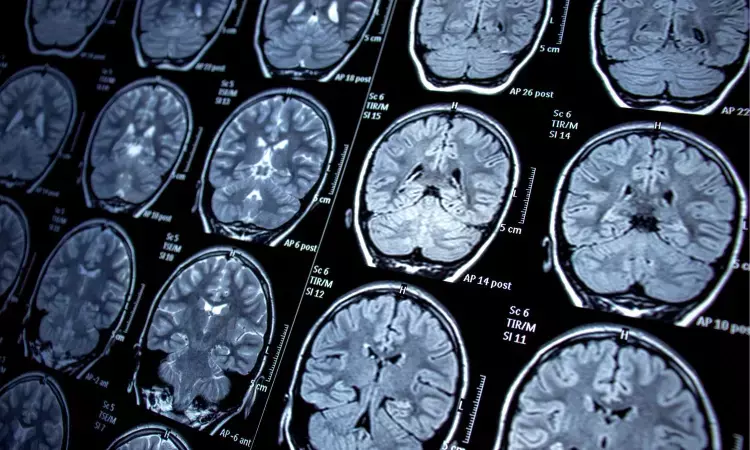- Home
- Medical news & Guidelines
- Anesthesiology
- Cardiology and CTVS
- Critical Care
- Dentistry
- Dermatology
- Diabetes and Endocrinology
- ENT
- Gastroenterology
- Medicine
- Nephrology
- Neurology
- Obstretics-Gynaecology
- Oncology
- Ophthalmology
- Orthopaedics
- Pediatrics-Neonatology
- Psychiatry
- Pulmonology
- Radiology
- Surgery
- Urology
- Laboratory Medicine
- Diet
- Nursing
- Paramedical
- Physiotherapy
- Health news
- Fact Check
- Bone Health Fact Check
- Brain Health Fact Check
- Cancer Related Fact Check
- Child Care Fact Check
- Dental and oral health fact check
- Diabetes and metabolic health fact check
- Diet and Nutrition Fact Check
- Eye and ENT Care Fact Check
- Fitness fact check
- Gut health fact check
- Heart health fact check
- Kidney health fact check
- Medical education fact check
- Men's health fact check
- Respiratory fact check
- Skin and hair care fact check
- Vaccine and Immunization fact check
- Women's health fact check
- AYUSH
- State News
- Andaman and Nicobar Islands
- Andhra Pradesh
- Arunachal Pradesh
- Assam
- Bihar
- Chandigarh
- Chattisgarh
- Dadra and Nagar Haveli
- Daman and Diu
- Delhi
- Goa
- Gujarat
- Haryana
- Himachal Pradesh
- Jammu & Kashmir
- Jharkhand
- Karnataka
- Kerala
- Ladakh
- Lakshadweep
- Madhya Pradesh
- Maharashtra
- Manipur
- Meghalaya
- Mizoram
- Nagaland
- Odisha
- Puducherry
- Punjab
- Rajasthan
- Sikkim
- Tamil Nadu
- Telangana
- Tripura
- Uttar Pradesh
- Uttrakhand
- West Bengal
- Medical Education
- Industry
Wrist-worn smartwatches may identify epileptic seizures using computational models

Researchers have recently developed computational models to detect seizure types derived from multimodal biosignal data.
Based on this research, Empatica E4, a wrist-worn device that measures heart rate, acceleration, electrodermal activity, and temperature, has a sensitivity and specificity of 77.78% and 60%, respectively, in detecting seizures.
This study has highlighted an essential clinical consideration: biosignals other than EEG recordings aid in identifying seizures using computational modelling techniques that can help improve the performance of the current FDA-approved devices.
Lead researcher Waroth Pipatpratarnporn directs this research article, Wrist-worn smartwatch and predictive models for seizures.
The main objective of the present study was to describe extracerebral biosignal characteristics of overall and various seizure types in comparison to baseline physical activities using multimodal devices, namely, Empatica E4.
Researchers developed predictive models for seizure types and assessed the diagnostic performance of each model. The participants underwent long-term video-electroencephalographic (EEG) monitoring using the gold standard technique and an index test, E4. Two certified epileptologists independently identified captured events as seizures and noted ictal semiology and EEG information.
The biosignals collected during 5-minute epochs for seizure events and the baseline period were compared. Models were developed using a generalized estimating equation to predict the occurrence of seizures overall and for each type. The diagnostic performance of each model was then evaluated.
Summarising the study results, Thirty patients were selected for the study, and their seizure events were recorded. One hundred eight seizure events and 120 baseline epochs were analyzed. Heart rate (HR), acceleration (ACC), and electrodermal activity (EDA) were elevated during seizures, with HR and ACC showing the most significant elevation in bilateral tonic–clonic seizures (BTCs). Cluster analysis revealed that HR and ACC were most elevated in BTCs compared to non-BTCs and isolated auras. HR and ACC were independent predictors for overall seizure types, BTCs, and non-BTCs, while only HR was a predictor for isolated auras. The diagnostic performance of the predictive model, including sensitivity, specificity, and area under the receiver operating characteristic (ROC) curve, was 77.78%, 60%, and .696 (95% confidence interval = .628–.764), respectively.
Based on our study’s findings, they said that Multimodal extracerebral biosignals (HR, ACC, EDA) detected by a wrist-worn smartwatch could help differentiate between epileptic seizures and regular physical activities.
They said the predictive algorithms can be applied in commercial seizure detection devices.
Further investigations are warranted with a large sample size to validate our predictive models.
Further reading:
BDS, MDS in Periodontics and Implantology
Dr. Aditi Yadav is a BDS, MDS in Periodontics and Implantology. She has a clinical experience of 5 years as a laser dental surgeon. She also has a Diploma in clinical research and pharmacovigilance and is a Certified data scientist. She is currently working as a content developer in e-health services. Dr. Yadav has a keen interest in Medical Journalism and is actively involved in Medical Research writing.
Dr Kamal Kant Kohli-MBBS, DTCD- a chest specialist with more than 30 years of practice and a flair for writing clinical articles, Dr Kamal Kant Kohli joined Medical Dialogues as a Chief Editor of Medical News. Besides writing articles, as an editor, he proofreads and verifies all the medical content published on Medical Dialogues including those coming from journals, studies,medical conferences,guidelines etc. Email: drkohli@medicaldialogues.in. Contact no. 011-43720751


